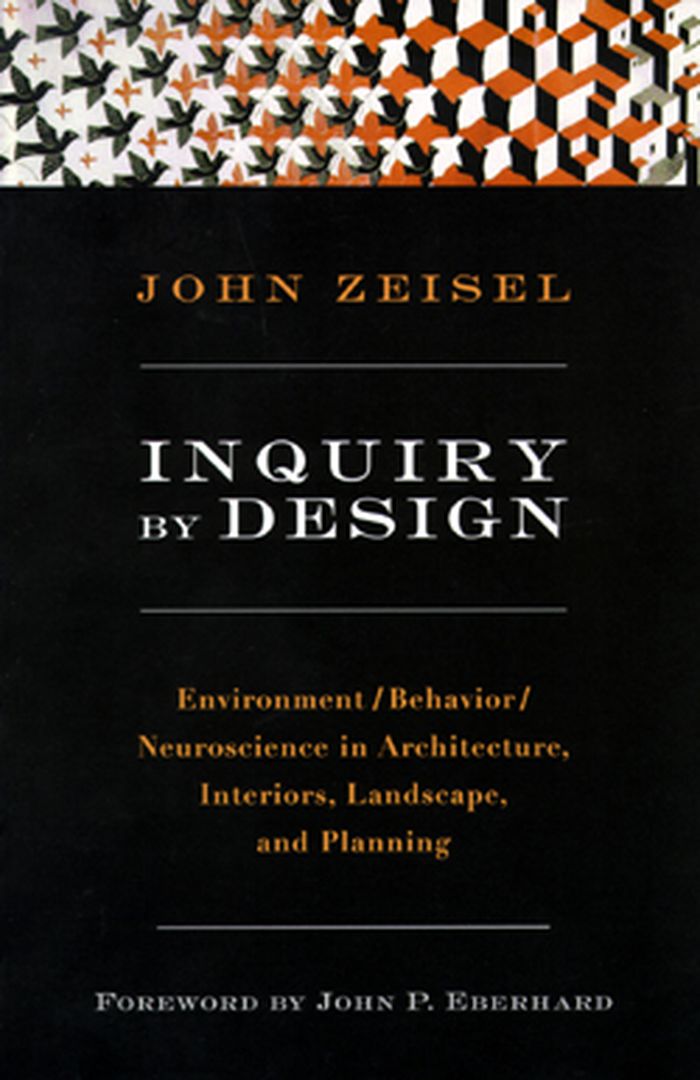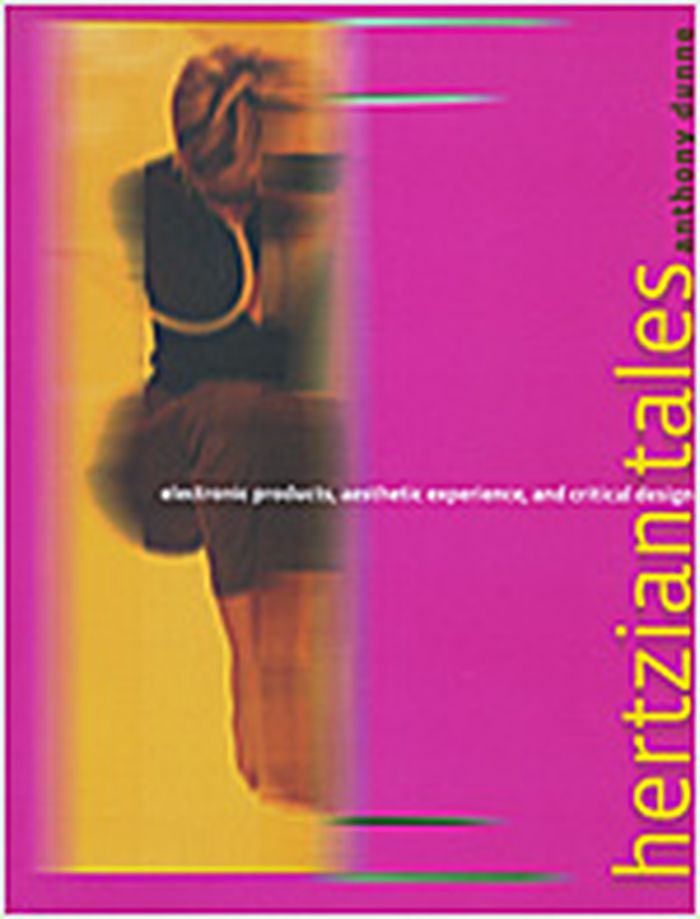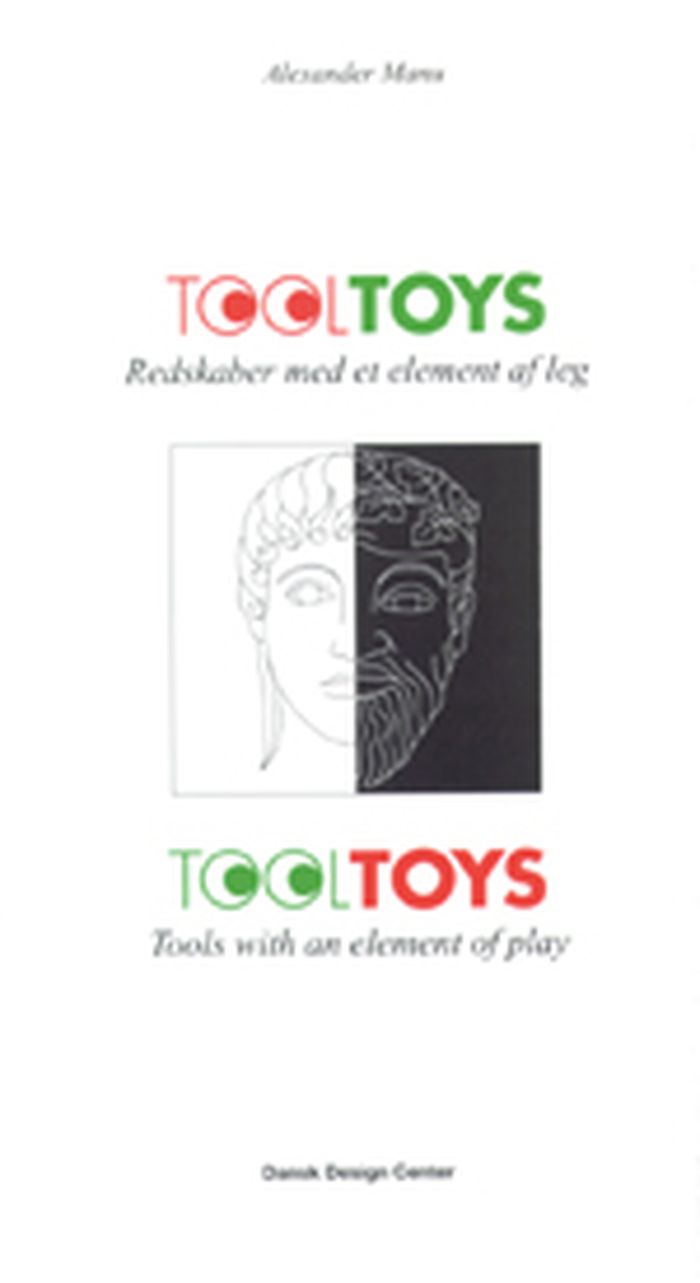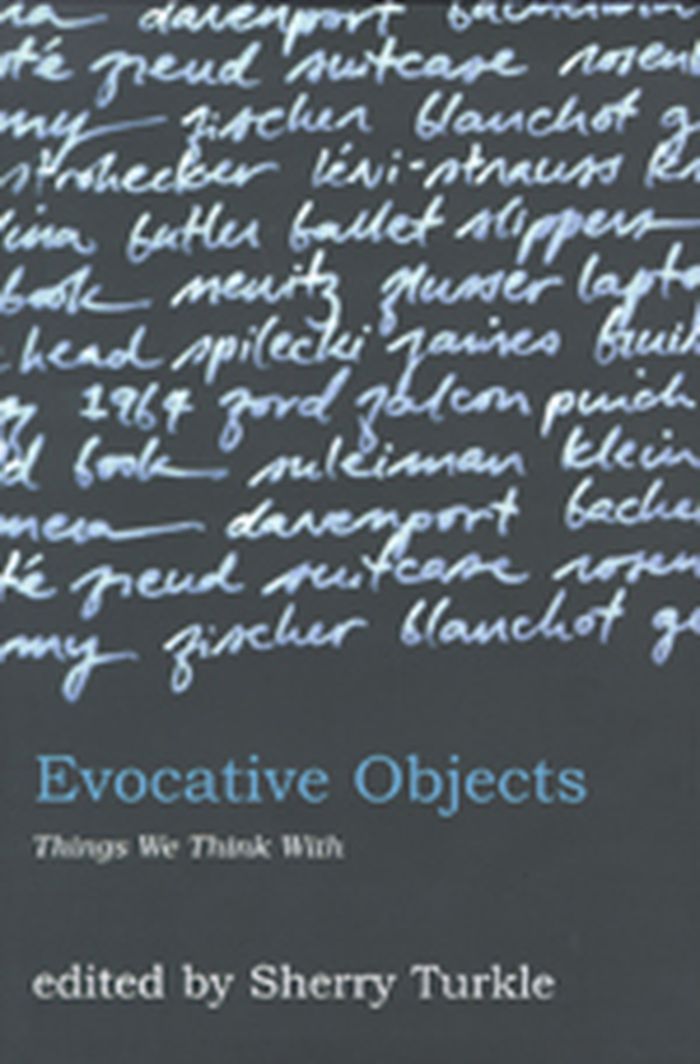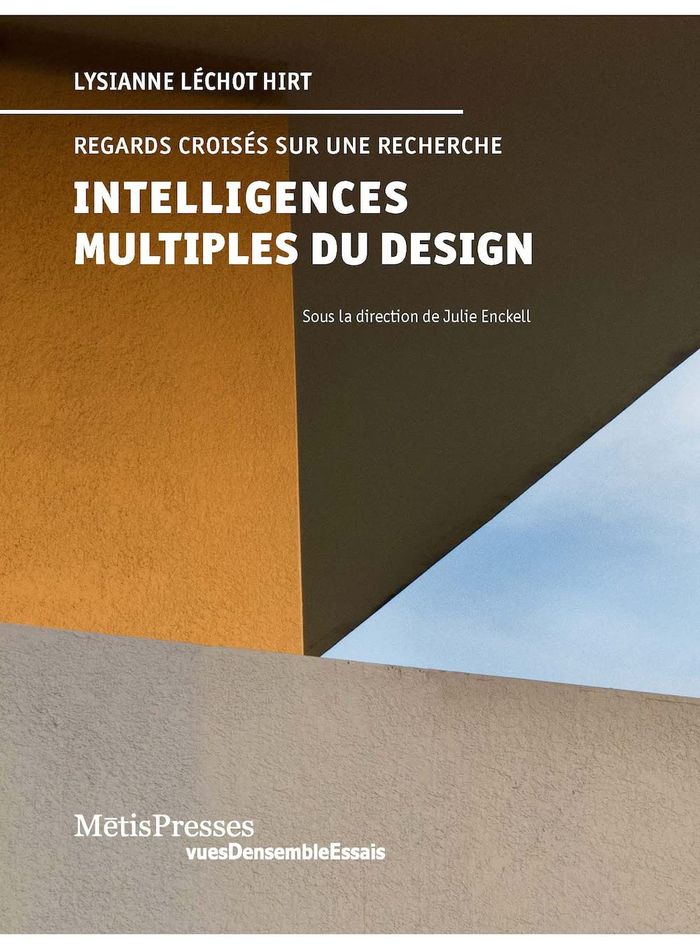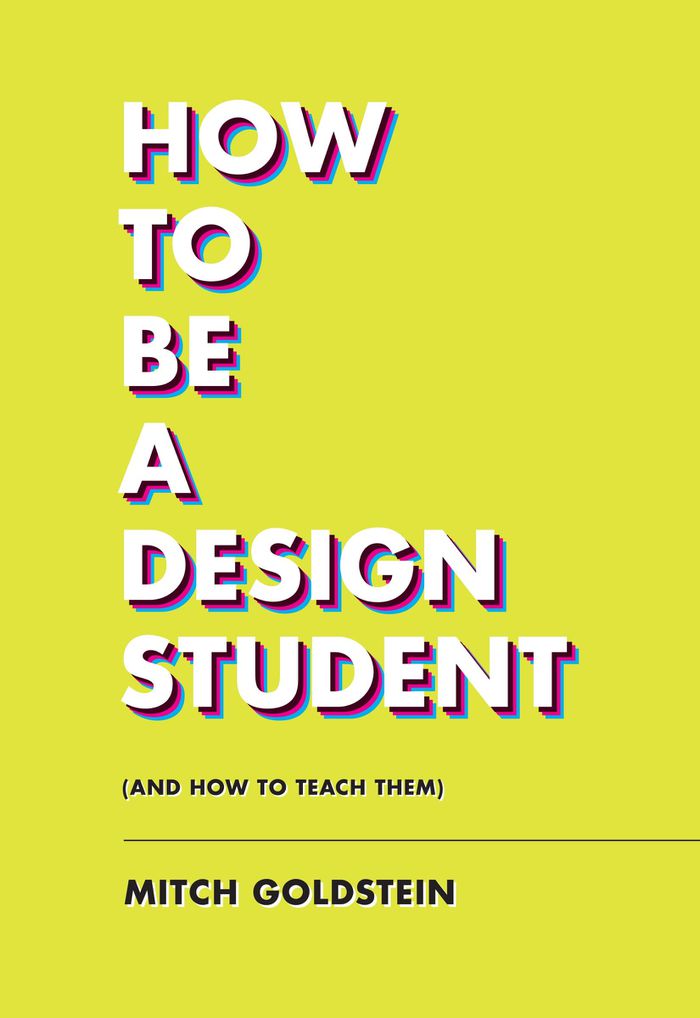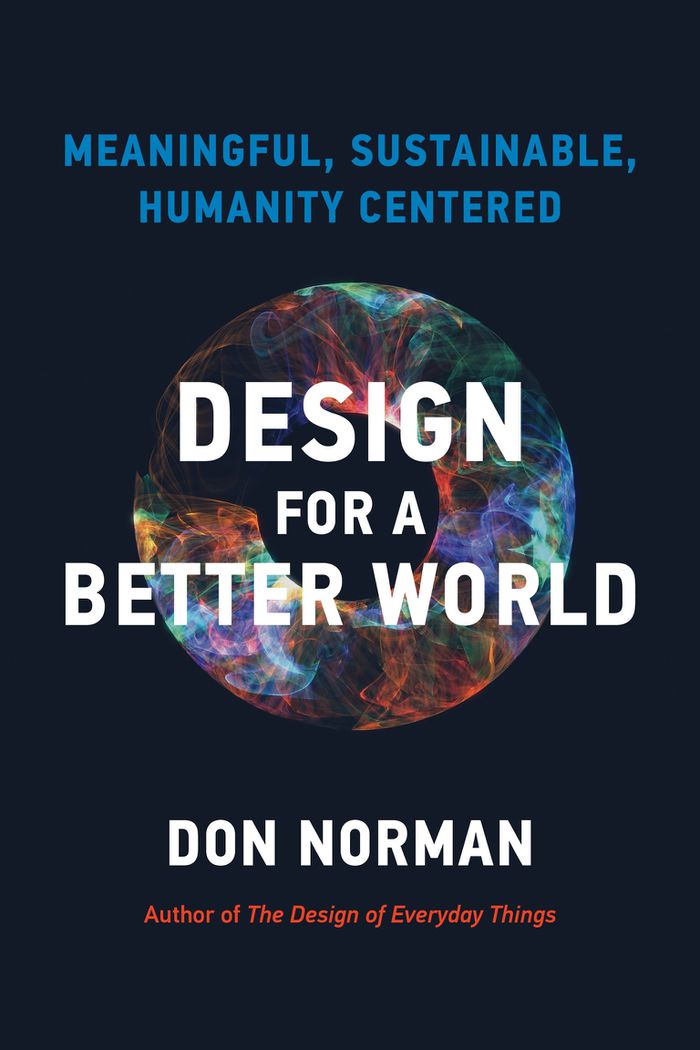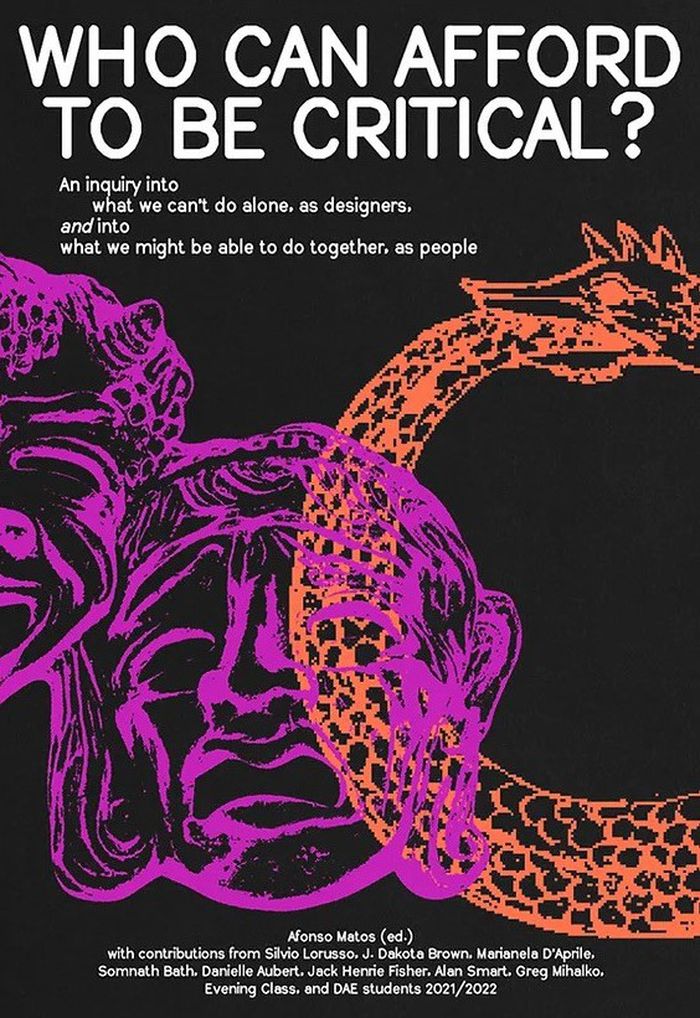Inquiry by design
$37.95
(available to order)
Summary:
INQUIRY BY DESIGN lays out fundamental theoretical approaches to design and research as well as practical research methods applicable to planning, programming, and evaluating physical environments. It systematically describes basic methods of research and how to apply them and shows how collaboration between designers and researchers leads to greater design creativity.
Inquiry by design
Actions:
Price:
$37.95
(available to order)
Summary:
INQUIRY BY DESIGN lays out fundamental theoretical approaches to design and research as well as practical research methods applicable to planning, programming, and evaluating physical environments. It systematically describes basic methods of research and how to apply them and shows how collaboration between designers and researchers leads to greater design creativity.
Design Theory
books
$25.95
(available to order)
Summary:
Finally, we are learning that simplicity equals sanity. We're rebelling against technology that's too complicated, DVD players with too many menus, and software accompanied by 75-megabyte "read me" manuals. The iPod's clean gadgetry has made simplicity hip. But sometimes we find ourselves caught up in the simplicity paradox: we want something that's simple and easy to(...)
The laws of simplicity : design, technology, business, life
Actions:
Price:
$25.95
(available to order)
Summary:
Finally, we are learning that simplicity equals sanity. We're rebelling against technology that's too complicated, DVD players with too many menus, and software accompanied by 75-megabyte "read me" manuals. The iPod's clean gadgetry has made simplicity hip. But sometimes we find ourselves caught up in the simplicity paradox: we want something that's simple and easy to use, but also does all the complex things we might ever want it to do. In "The laws of simplicity", John Maeda offers ten laws for balancing simplicity and complexity in business, technology, and design -guidelines for needing less and actually getting more. Maeda - a professor in MIT's Media Lab and a world-renowned graphic designer - explores the question of how we can redefine the notion of "improved" so that it doesn't always mean something more, something added on. Maeda's first law of simplicity is "Reduce." It's not necessarily beneficial to add technology features just because we can. And the features that we do have must be organized (Law 2) in a sensible hierarchy so users aren't distracted by features and functions they don't need. But simplicity is not less just for the sake of less. Skip ahead to Law 9: "Failure : accept the fact that some things can never be made simple." Maeda's concise guide to simplicity in the digital age shows us how this idea can be a cornerstone of organizations and their products -how it can drive both business and technology. We can learn to simplify without sacrificing comfort and meaning, and we can achieve the balance described in Law 10. This law, which Maeda calls "The One," tells us: "Simplicity is about subtracting the obvious, and adding the meaningful."
books
September 2006, Cambridge (MA)
Design Theory
$37.50
(available to order)
Summary:
As our everyday social and cultural experiences are increasingly mediated by electronic products--from "intelligent" toasters to iPods--it is the design of these products that shapes our experience of the "electrosphere" in which we live. Designers of electronic products, writes Anthony Dunne in "Hertzian tales", must begin to think more broadly about the aesthetic role(...)
Hertzian tales : electronic products, aesthetic experience, and critical design
Actions:
Price:
$37.50
(available to order)
Summary:
As our everyday social and cultural experiences are increasingly mediated by electronic products--from "intelligent" toasters to iPods--it is the design of these products that shapes our experience of the "electrosphere" in which we live. Designers of electronic products, writes Anthony Dunne in "Hertzian tales", must begin to think more broadly about the aesthetic role of electronic products in everyday life. Industrial design has the potential to enrich our daily lives--to improve the quality of our relationship to the artificial environment of technology, and even, argues Dunne, to be subverted for socially beneficial ends. The cultural speculations and conceptual design proposals in "Hertzian tales" are not utopian visions or blueprints; instead, they embody a critique of present-day practices, "mixing criticism with optimism." Six essays explore design approaches for developing the aesthetic potential of electronic products outside a commercial context--considering such topics as the post-optimal object and the aesthetics of user-unfriendliness--and five proposals offer commentary in the form of objects, videos, and images. Very little has changed in the world of design since "Hertzian tales" was first published by the Royal College of Art in 1999, writes Dunne in his preface to this MIT Press edition : "Design is not engaging with the social, cultural, and ethical implications of the technologies it makes so sexy and consumable." His project and proposals challenge it to do so.
Design Theory
$17.95
(available to order)
Summary:
The Inner Studio unveils a place of learning inside each of us where we can learn lessons about ourselves that are inseperable from what we design and build. Filled with anecdotes, examples and exercises, The Inner Studio guides readers into deeper levels of our imagination and decision making, focusing squareley on the experience of the designer during the creative act(...)
The inner studio: a designer's guide to the resources of the psyche
Actions:
Price:
$17.95
(available to order)
Summary:
The Inner Studio unveils a place of learning inside each of us where we can learn lessons about ourselves that are inseperable from what we design and build. Filled with anecdotes, examples and exercises, The Inner Studio guides readers into deeper levels of our imagination and decision making, focusing squareley on the experience of the designer during the creative act of design. How do designers convert their subjective and often unconscious experience of the world into design? What are the creative consequencesof what we may call, designing from within?" Welcome to the The Inner Studio.
Design Theory
$42.50
(available in store)
Summary:
We all know what a tool is, and what toys are. But what happens if the two concepts are combined? Manu's message is that many of the succesful products of the future will be – ToolToys.
January 1995, Kobenhavn
Tooltoys : redskaber med et element af leg / tools with an element of play
Actions:
Price:
$42.50
(available in store)
Summary:
We all know what a tool is, and what toys are. But what happens if the two concepts are combined? Manu's message is that many of the succesful products of the future will be – ToolToys.
$27.95
(available to order)
Summary:
For Sherry Turkle, "We think with the objects we love; we love the objects we think with." In "Evocative objects", Turkle collects writings by scientists, humanists, artists, and designers that trace the power of everyday things. These essays reveal objects as emotional and intellectual companions that anchor memory, sustain relationships, and provoke new ideas. This(...)
Evocative objects : things we think with
Actions:
Price:
$27.95
(available to order)
Summary:
For Sherry Turkle, "We think with the objects we love; we love the objects we think with." In "Evocative objects", Turkle collects writings by scientists, humanists, artists, and designers that trace the power of everyday things. These essays reveal objects as emotional and intellectual companions that anchor memory, sustain relationships, and provoke new ideas. This volume's special contribution is its focus on everyday riches: the simplest of objects - an apple, a datebook, a laptop computer - are shown to bring philosophy down to earth. The poet contends, "No ideas but in things." The notion of evocative objects goes further : objects carry both ideas and passions. In our relations to things, thought and feeling are inseparable. Whether it's a student's beloved 1964 Ford Falcon (left behind for a station wagon and motherhood), or a cello that inspires a meditation on fatherhood, the intimate objects in this collection are used to reflect on larger themes -the role of objects in design and play, discipline and desire, history and exchange, mourning and memory, transition and passage, meditation and new vision. In the interest of enriching these connections, Turkle pairs each autobiographical essay with a text from philosophy, history, literature, or theory, creating juxtapositions at once playful and profound. So we have Howard Gardner's keyboards and Lev Vygotsky's hobbyhorses; William Mitchell's Melbourne train and Roland Barthes' pleasures of text; Joseph Cevetello's glucometer and Donna Haraway's cyborgs. Each essay is framed by images that are themselves evocative. Essays by Turkle begin and end the collection, inviting us to look more closely at the everyday objects of our lives, the familiar objects that drive our routines, hold our affections, and open out our world in unexpected ways.
Design Theory
$33.95
(available to order)
Summary:
En proposant un point de vue nouveau sur le monde et la société, la recherche-création s’éloigne de la conception traditionnelle du design, conçu comme pur développement de produits. Tout en dépassant les cadres universitaires de l’histoire, de l’esthétique ou de la sociologie, cette approche innovante ouvre un horizon concret de réflexions sur les enjeux contemporains du(...)
Intelligences multiples du design
Actions:
Price:
$33.95
(available to order)
Summary:
En proposant un point de vue nouveau sur le monde et la société, la recherche-création s’éloigne de la conception traditionnelle du design, conçu comme pur développement de produits. Tout en dépassant les cadres universitaires de l’histoire, de l’esthétique ou de la sociologie, cette approche innovante ouvre un horizon concret de réflexions sur les enjeux contemporains du design et des disciplines issues des sciences humaines. Elle permet également d’établir un dialogue fertile entre les différents champs de la création. Lysianne Léchot Hirt, qui a largement contribué à théoriser cette approche, envisageait son champ d’investigation comme une matière vivante, profondément ancrée dans le quotidien et nécessitant d’être observée avec le regard, disait-elle, d’une «ethnographe». Ce livre réunit une sélection de ses essais les plus marquants, suivis de plusieurs contributions de personnes ayant oeuvré dans son sillage.
Design Theory
$38.95
(available in store)
Summary:
Life as a design student is filled with questions. Rochester Institute of Technology Associate Professor of Design Mitch Goldstein has many answers, shared in clear, clever, and sage advice that is helpful for students at any level of their education, as well as anyone thinking about attending design school and wondering what it's really all about. For design students(...)
How to be a design student (and how to teach them)
Actions:
Price:
$38.95
(available in store)
Summary:
Life as a design student is filled with questions. Rochester Institute of Technology Associate Professor of Design Mitch Goldstein has many answers, shared in clear, clever, and sage advice that is helpful for students at any level of their education, as well as anyone thinking about attending design school and wondering what it's really all about. For design students and art professionals, Goldstein is a brilliant resource for real-world thoughts about design school and creative practice. Drawing on 16 years of teaching design and his popular "Dear Design Student" Twitter project, Goldstein explores all aspects of how to get the most out of the school experience, and beyond as a creative professional. From collaboration and critiques to practice and process, this is an inspiring roadmap for design students as well as a valuable guide for design professors to help them understand how to shape curriculum from a student's perspective and better the collaborative experience.
Design Theory
$39.95
(available to order)
Summary:
How human behavior brought our world to the brink, and how human behavior can save us. The world is a mess. Our dire predicament, from collapsing social structures to the climate crisis, has been millennia in the making and can be traced back to the erroneous belief that the earth's resources are infinite. The key to change, says Don Norman, is human behavior, covered(...)
Design for a better world: meaningful, sustainable, humanity centered
Actions:
Price:
$39.95
(available to order)
Summary:
How human behavior brought our world to the brink, and how human behavior can save us. The world is a mess. Our dire predicament, from collapsing social structures to the climate crisis, has been millennia in the making and can be traced back to the erroneous belief that the earth's resources are infinite. The key to change, says Don Norman, is human behavior, covered in the book's three major themes: meaning, sustainability, and humanity-centeredness. Emphasize quality of life, not monetary rewards; restructure how we live to better protect the environment; and focus on all of humanity. ''Design for a better world'' presents an eye-opening diagnosis of where we've gone wrong and a clear prescription for making things better. Norman proposes a new way of thinking, one that recognizes our place in a complex global system where even simple behaviors affect the entire world. He identifies the economic metrics that contribute to the harmful effects of commerce and manufacturing and proposes a recalibration of what we consider important in life. His experience as both a scientist and business executive gives him the perspective to show how to make these changes while maintaining a thriving economy. Let the change begin with this book before it's too late.
Design Theory
$35.00
(available in store)
Summary:
Afonso Matos is a Portuguese designer and researcher who is based in The Netherlands. This book is a collection of fanzines inspired by conversations and texts around four main themes: the bubble of the (critical) design school; the power of design and the agency of designers; the nature of design; and collective power. Included are excerpts from Matos’ thesis on the use(...)
Who can afford to be critical?
Actions:
Price:
$35.00
(available in store)
Summary:
Afonso Matos is a Portuguese designer and researcher who is based in The Netherlands. This book is a collection of fanzines inspired by conversations and texts around four main themes: the bubble of the (critical) design school; the power of design and the agency of designers; the nature of design; and collective power. Included are excerpts from Matos’ thesis on the use of design as a social critique and agent of change, his transparent disclosures and personal investigation into the impact of privilege on critical design, as well as the contributions from Silvio Lorusso, J. Dakota Brown, Marianela D’Aprile, Somnath Bhatt, the DAE students of 2021/2022, and many more.
Design Theory
